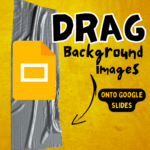I have long been a fan of Google Voice. It allows you to create a new phone number and attach your other phone numbers so that you can give out your number without disclosing your real phone number. I like to have students text message the Google Voice number and to use this as a student responder during class.
Google Voice Podcasts
Another feature of Google Voice is the ability to have students call the Google Voice number, allowing it to go to voice mail, and being able to embed the recorded voicemail into the class website to show student exemplars. This is a quick way to create a podcast. The advantage to using Google Voice for podcasting is that it is free and does not require additional equipment beyond a telephone.

The voicemails can be embedded, but they can also be downloaded. The download is an MP3 file. The problem with a voicemail is that it is one sided. If students are doing podcasting they may want to conduct a podcast interview.
Google Voice allows for the recording of a phone call. After setting up a Google Voice account (http://voice.google.com) go into the settings and choose the calls tab.

Part way down the screen is the option to enable recording of phone calls.

The trick to make this work is that the person WITHOUT the Google Voice account needs to initiate the phone call. If a student wants to interview a book author, the author will need to call the Google Voice number.
Once the phone call is started the Google Voice subscriber will need to hit the number 4 on the keypad. This will record the phone call.
Going into the settings at voice.google.com the recording can be found. From the more button select download. The recording will download as an MP3.

Garageband
If the student has access to a Mac he/she can use GarageBand to edit the podcast interview. Likely the podcast needs some editing: cut out the small talk at the beginning and end of the phone interview, perhaps a need to cut out a cough, or just shorten the interview.
In addition to editing the interview intro and outro music can be added.
Select a template for starting a GarageBand file. It does not matter which one you choose, but since we are making podcasts, choose the podcast template.
Unless you saved the MP3 file in another place, the file is located in the downloads folder of the Mac. Pull up the download folder and DRAG in the MP3 file into the GarageBand file.

After the Google Voice MP3 has been dragged into GarageBand the ends can be trimmed, music can be added and a final “professional” sounding product can be exported and produced.









5 thoughts on “Podcasting with Google Voice and GarageBand”
Thanks Alice for the nice clear explanation. I have used Google Voice to capture voice contributions from my online students.
Great job and for those who don’t have a Mac, you can do this with the free software (Audacity) on a Windows machine. Or if you are working in the cloud, how about uploading to YouTube and using the YouTube Video Editor. Lots of possibilities.
Hey there Alice!
Great post! Too bad Google Voice isn’t available where I live. 🙁
Thanks for sharing a great way to use another fantastic tool from Google!
ACK! So true, globally Google isn’t available everywhere. That stinks.
Thanks for the post. That’s a really fun way to use Google voice.
Do you have any favorite podcasts?
I do not listen to podcasts, but I like the idea of students creating them.